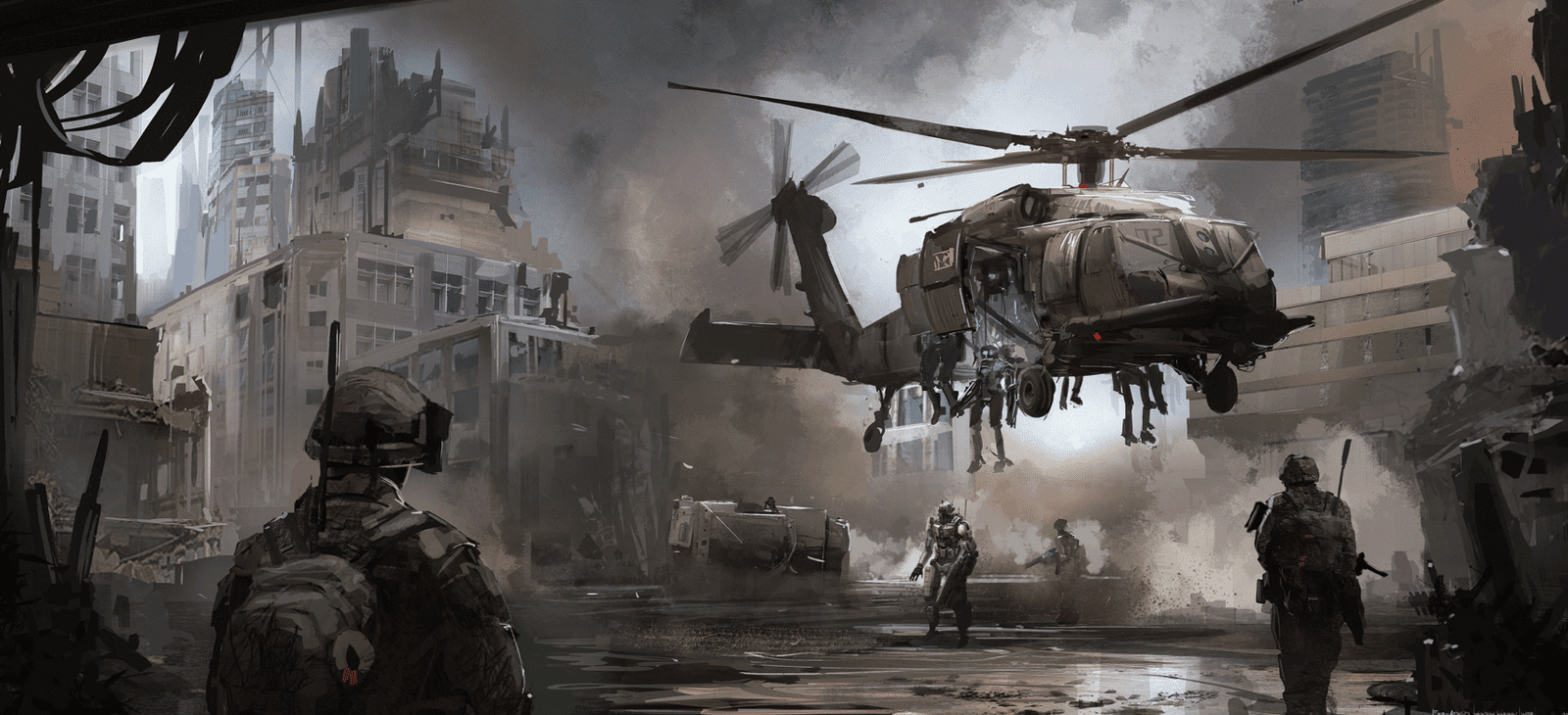
What is a Tyrant: Unmasking U.S. Support
Updated Sept 2023
In today’s ever-evolving geopolitical landscape, the inquiry into the nature of a “Tyrant” holds profound significance, especially when scrutinizing the intricate involvement of the United States with such authoritarian leaders. This article explores this multifaceted subject deeply and meticulously dissects the motivations underpinning the U.S.’s support for authoritarian regimes worldwide. By seamlessly integrating the keyword “what is a tyrant” into our narrative, our mission is to give readers a profound and all-encompassing comprehension.
Introduction
To embark on this journey, we must first decipher the enigma encapsulated within the term “Tyrant.” What attributes and actions define a Tyrant, and how do these characteristics manifest on the global stage? Additionally, we will explore the puzzling allure that compels the United States to extend its support to such rulers.
What Is A Tyrant: A Historical Perspective
Venturing into the annals of history, we uncover a compelling narrative of U.S. involvement with tyrants worldwide. Afghanistan emerged as a Cold War pawn, where the United States, Pakistan, and Saudi Arabia orchestrated a complex alliance. This collaboration, driven by geopolitical interests, aimed to counter Soviet regional influence. However, the unintended consequences of this alliance were far-reaching.
The U.S.-backed mujahideen fighters, including warlords and extremist groups, gained power and influence in Afghanistan. This power vacuum, coupled with the influx of weapons and resources, led to the rise of warlords who perpetuated violence and instability. The illicit opium trade flourished, further fueling the cycle of conflict and corruption. The moral compass guiding these alliances was questioned as the U.S. was entangled with unsavoury actors.
Similarly, Albania’s intriguing Cold War plot reveals the intricate nature of U.S. interference. Exiles, dissent, and covert operations intertwined in a geopolitical chess game. The U.S. collaborated with former fascist war criminals, raising pertinent questions about the moral compass guiding these alliances. The pursuit of geopolitical interests often overshadowed ethical considerations, leading to alliances with individuals and groups with questionable backgrounds.
These historical examples highlight the complexities and moral dilemmas associated with U.S. support for tyrants. Pursuing strategic objectives sometimes leads to unintended consequences, perpetuating cycles of violence, instability, and human rights abuses. Understanding this historical perspective is crucial in comprehending the intricate dynamics of international relations and the impact of such alliances on global stability.
The Broader Picture: 35 Countries and Counting
Zooming out to view the broader picture, a disturbing global pattern emerges. The United States, in its pursuit of geopolitical interests, has forged alliances with oppressive regimes in numerous countries. This intricate web of partnerships often leads to a trail of bloodshed that raises questions about the moral implications of these partnerships.
Unveiling the dark truth behind these alliances, we find that the consequences of U.S. support for oppressive regimes can be devastating. The pursuit of geopolitical interests sometimes overshadows ethical considerations, leading to partnerships with leaders and governments known for human rights abuses, corruption, and authoritarian rule.
As we follow the trail of bloodshed, it becomes evident that the repercussions of these alliances often reach the highest levels of the U.S. government. The steps of the U.S. Capitol and the White House are not immune to the consequences of these complex alliances. The State Department’s role in these partnerships raises concerns about U.S. impunity and the extent to which the U.S. government is willing to overlook human rights violations to pursue its interests.
Understanding this broader picture is crucial in comprehending the complexities of international relations and the impact of these alliances on global stability. It prompts us to question the moral compass guiding these decisions and to advocate for a more principled approach to foreign policy.
Exploring the Implications
The aftermath of U.S. support for tyrants is marked by chaos and consequences. In Afghanistan, the post-invasion period witnessed rampant corruption, stagnated human development, and an alarming surge in opium production. The enigmatic figure of Ahmed Wali Karzai, the brother of President Karzai, emerges as a CIA-backed drug lord, epitomizing the paradoxical nature of U.S. alliances. This revelation raises questions about the extent of U.S. involvement in shaping the destiny of Afghanistan and the unintended consequences of such partnerships.
Similarly, the unsettling history of Albania’s failed plot and collaboration with fascist war criminals cast a shadow on U.S. involvement in smaller nations’ affairs. The U.S.’s pursuit of geopolitical interests sometimes led to alliances with individuals and groups with questionable backgrounds. This raises ethical concerns and highlights the complexities of balancing strategic objectives with moral considerations.
Understanding the implications of U.S. support for tyrants is crucial in comprehending the long-term consequences of these alliances. The chaos, corruption, and human rights abuses that often follow such partnerships have a lasting impact on the affected nations and their people. It prompts us to reflect on the moral compass guiding foreign policy decisions and advocate for a more principled approach prioritising human rights and stability.
Informed Opinions Matter
Amidst this intricate narrative, external perspectives are crucial in shaping our understanding. Engaging with compelling articles and viewpoints external to this narrative can offer alternative insights and encourage readers to delve deeper into the subject’s complexities. These diverse perspectives challenge our assumptions and broaden our understanding of the topic.
Furthermore, incorporating additional resources such as YouTube videos can provide visual and auditory dimensions to the discussion. These videos can offer unique insights, expert analysis, and firsthand accounts that further enrich the exploration of the subject matter. They provide an immersive experience that complements the written content and allows readers to engage with the topic from different angles.
By embracing informed opinions and utilizing various resources, readers can better understand the complexities surrounding U.S. support for tyrants. This multifaceted approach encourages critical thinking and fosters a more nuanced perspective on the implications and consequences of such alliances.
The Future of U.S. Support for Tyrants
Looking ahead, we scrutinize Putin’s strategy in Syria, where Russian air strikes and ground operations promise a distinct approach to countering jihadi groups. Whether Syria will be a dilemma or a clear path to success for Putin’s endeavours is a matter of ongoing debate and speculation.
On the one hand, Putin’s comprehensive strategy, which combines precise airstrikes with a formidable ground operation, has shown initial signs of success. The Russian forces have been able to weaken and disrupt the jihadi groups, reclaiming territories and restoring stability in certain areas. The coordinated efforts between the Russian military, the Syrian government, and local allies have created a more favourable environment for countering extremism.
However, the situation in Syria remains complex and volatile. The presence of multiple factions, regional power dynamics, and external influences pose significant challenges. The ongoing conflict and the potential for unforeseen developments make predicting the outcome of Putin’s strategy difficult.
The future of U.S. support for tyrants also remains uncertain. As the world evolves and global dynamics shift, there is an increasing demand for a more moral and ethical approach to foreign policy. The scrutiny and criticism surrounding past alliances with tyrants have prompted calls for greater accountability and a reevaluation of priorities.
In conclusion, the future of U.S. support for tyrants and the success of Putin’s strategy in Syria are complex and multifaceted issues. They require ongoing analysis, critical examination, and a commitment to learning from past mistakes. We can only navigate the challenges ahead and strive for a more just and stable world through a comprehensive understanding of the geopolitical landscape and a dedication to ethical decision-making.
U.S. Faces the Mirror
Reflecting on the past, we revisit 2015, a pivotal moment when the United States grappled with its international image. The costs of supporting authoritarian regimes, breaking international laws, and promoting regime change through violence come under scrutiny. This section serves as a sobering reminder of the moral and ethical dilemmas intertwined with global power politics.
In 2015, the United States faced increasing criticism for its alliances with oppressive regimes and disregarding international laws. The consequences of supporting authoritarian regimes became more apparent as human rights abuses, corruption, and violence-plagued these nations. The U.S. found itself in a moral quandary, as its pursuit of geopolitical interests often clashed with its professed values of democracy and human rights.
The breaking of international laws in pursuing regime change through violence further compounded the ethical dilemmas faced by the United States. The interventions in countries like Iraq, Libya, and Syria raised questions about the legitimacy and effectiveness of such actions. The unintended consequences of these interventions, including the rise of extremist groups and the destabilization of entire regions, highlighted the complexities and risks involved in pursuing regime change through violence.
These events served as a wake-up call for the United States, prompting its foreign policy approach reevaluation. The need for greater accountability, transparency, and adherence to international norms became increasingly apparent. The United States was forced to confront the contradictions between its stated values and its actions on the global stage.
In conclusion, 2015 marked a turning point for the United States, as it faced scrutiny for its support of authoritarian regimes, disregard for international laws, and promotion of regime change through violence. This period of reflection serves as a reminder of the moral and ethical dilemmas inherent in global power politics, urging a more conscientious and responsible approach to international relations.
Unmasking Tyranny: The Afghan and Albanian Cases
In the context of Afghanistan, during the 1980s, the United States collaborated with Pakistan and Saudi Arabia in a concerted effort to overthrow the socialist government in Kabul. This endeavour involved substantial funding, training, and arming of forces led by conservative tribal leaders who perceived their authority as threatened by the government’s advancements in education, women’s rights, and land reform. After the withdrawal of Soviet forces in 1989, the warlords supported by the U.S. plunged Afghanistan into chaos, simultaneously fueling opium production to an unprecedented scale, ranging from 2,000 to 3,400 tons annually.
Interestingly, the Taliban government, which came into power, managed to drastically reduce opium production by 95% between 1999 and 2001. However, the U.S. invasion in 2001 reinstated the warlords and drug lords to positions of power. Consequently, Afghanistan currently ranks 175th out of 177 countries for corruption and 175th out of 186 in terms of human development, and since 2004, it has consistently produced a staggering 5,300 tons of opium each year. Even President Karzai’s brother, Ahmed Wali Karzai, gained notoriety as a CIA-backed drug lord. Following a significant U.S. offensive in Kandahar province in 2011, Colonel Abdul Razziq was appointed provincial police chief, bolstering a heroin smuggling operation already netting him $60 million annually, all within one of the world’s poorest nations.
Albania Unveiled: U.S. Partnerships with War Criminals in Pursuit of Power
Turning our attention to Albania, between 1949 and 1953, the United States and the United Kingdom embarked on a mission to overthrow the government of Albania, then the smallest and most vulnerable communist nation in Eastern Europe. The strategy involved recruiting and training exiles, who were sent back to Albania to foment dissent and orchestrate an armed uprising. Many of these exiles, curiously, had been former collaborators with the Italian and German occupations during World War II.
One notable figure among these exiles was former Interior Minister Xhafer Deva, responsible for overseeing the deportations of various groups, including Jews, Communists, partisans, and individuals deemed suspicious, as recorded in a Nazi document from that era. It is worth noting that declassified U.S. documents have revealed that Deva was among the 743 fascist war criminals enlisted by the United States following World War II.
In light of these revelations, it becomes apparent that the United States has partnered with questionable actors and regimes to pursue various geopolitical objectives. As readers contemplate these historical narratives, we encourage them to explore the broader implications and formulate informed opinions. The journey of discovery lies in their hands as they absorb the information presented herein.
What is a Tyrant and How Putin Will Win in Syria
The reason Putin will succeed where the US failed in its war on ISIS lies in the comprehensive approach taken by the Russian forces. While the US-led coalition primarily relied on airstrikes, Putin’s strategy involves a combination of airstrikes and a formidable ground operation. This two-pronged approach is already yielding results on the ground.
The Russian Air Force has been relentlessly pounding terrorist targets across the Idlib Governorate and ISIS strongholds in the East, such as Raffa. These airstrikes soften the targets and disrupt the jihadi groups’ capabilities. However, the accompanying ground operation sets Putin’s strategy apart, which involves well-trained and well-equipped troops moving into position.
This ground operation aims to conduct a thorough mop-up process, targeting the remaining jihadi groups. As Russian ground troops advance, they will cut through the ranks of the jihadists, leaving them with limited options: flee, surrender, or face the consequences. This coordinated effort aims to overpower the jihadi groups and establish control over the territories they once held.
Contrary to the media’s predictions of a dilemma, Putin’s strategy is proving effective in dismantling the jihadi presence in Syria. The combination of precise airstrikes and a formidable ground operation ensures that the jihadi groups are confronted from the air and the ground, leaving them with little room to manoeuvre.
Moreover, Putin’s approach prioritizes the protection of civilians and the restoration of stability in the region. Russian forces coordinate with the Syrian government and local allies to ensure that liberated areas are secured and essential services are restored. This comprehensive approach targets the jihadi groups and aims to create the conditions for a sustainable peace in Syria.
Putin’s Syrian Gambit: Dominating the Battlefield
As per South Front’s report by Lieutenant General Andrey Kartapolov, a pivotal development is underway. The strategic positioning of Russian aircraft in Syria grants the Kremlin unprecedented power to shape and dominate the battleground in Syria and Iraq, a feat that defies the scale of the Russian military presence. This revelation in the “International Military Review – Syria” dated October 5, 2015, marks a turning point.
Nestled within the heart of this operation is the Russian air base at Latakia, strategically poised to offer critical air cover and target precision, decimating terrorist strongholds scattered across the region. The Russian Air Force, bolstered by this vantage point, has launched an all-out offensive to sever supply lines and escape routes, leaving jihadists with little room to manoeuvre within Syria’s confines. Notably, this determination to eradicate threats is exemplified by the obliteration of ISIS positions along the primary highway to Iraq.
Despite Saudi Arabia’s vocal stance, it poses no tangible threat to Putin’s ambitious Syrian campaign. The Saudi rhetoric may resonate, but the nation is grappling with a plummeting economy, a direct consequence of plunging oil prices. Simultaneously, the Saudi military is embroiled in an unwinnable war in Yemen. These factors and the unfolding events in Syria render any deeper Saudi involvement highly improbable.
An intriguing perspective and the author might be onto something. Indeed, 2015 could be etched in history as when the U.S. faced global scrutiny. The U.S. government’s extensive backing of authoritarian regimes raises questions about our moral authority to dictate leadership elsewhere. It’s evident that we’ve skirted international laws, as exemplified by our involvement in Ukraine, where we endorsed regime change through violent means.
Deciphering Tyranny: Final Reflections on What is a Tyrant
In conclusion, our exploration into the enigmatic realm of tyrants and the United States’ involvement has shed light on the intricate complexities of this global dynamic. A pattern emerged as we navigated the historical pages of U.S. support for authoritarian regimes, from Afghanistan to Albania and beyond. The United States’ pursuit of its geopolitical interests often led to alliances with questionable actors, raising ethical and moral questions.
We expanded our perspective to encompass a broader pattern of U.S. collaboration with tyrants in various nations, unravelling the unsettling trail of bloodshed that too often led back to the heart of U.S. power. The role of the U.S. State Department and its implications became evident, casting a sobering light on the consequences of such alliances.
Examining the aftermath of U.S. support for tyrants, we witnessed Afghanistan’s chaos, corruption, stunted human development, and an alarming opium production surge. The presence of figures like President Karzai’s brother, Ahmed Wali Karzai, as a CIA-backed drug lord, exemplified the paradox within these alliances.
Albania’s history provided another layer to this intricate narrative with the recruitment of exiles, some of whom were former fascist collaborators. The declassified revelation that one of them, Xhafer Deva, was among the fascist war criminals recruited by the United States after World War II added depth to our exploration.
External perspectives were also invited into our discourse, with a compelling article and a YouTube link offering readers alternative viewpoints and opportunities to delve deeper into the complexities of this subject.
Looking to the future, we contemplated Putin’s strategy in Syria, which appeared poised for success thanks to a comprehensive approach that combined precise airstrikes with a formidable ground operation. It seems Syria may not become the quagmire often predicted by the media but rather a path to triumph for Putin’s endeavours.
As we turned the lens back on the United States, we couldn’t ignore 2015, a moment when the nation faced global scrutiny. The cost of supporting authoritarian regimes, disregarding international laws, and promoting regime change through violence cast a shadow on the nation’s reputation.
Readers are encouraged to draw conclusions and engage in informed discourse in this intricate tapestry of geopolitical power, tyranny, and alliances. The journey of discovery continues, fueled by a thirst for knowledge and an unwavering commitment to understanding the multifaceted world of global politics.
FAQ on what is a Tyrant
Q: What is a Tyrant?
A: A Tyrant is an authoritarian ruler who exercises oppressive and unrestrained power, often at the expense of civil liberties and human rights.
Q: Why does the U.S. support Tyrants?
A: The U.S. has historically supported tyrants in pursuit of its geopolitical interests, forming alliances that sometimes compromise ethical values.
Q: Can you provide examples of U.S. support for Tyrants?
A: Yes, Afghanistan during the Cold War and Albania during the early 1950s are notable examples of U.S. collaboration with authoritarian regimes.
Q: What were the consequences of U.S. support for Tyrants in Afghanistan?
A: U.S. support led to the rise of warlords, opium production, and corruption in Afghanistan, destabilizing the nation.
Q: How did the U.S. back tyrants in Albania?
A: The U.S. recruited and trained exiles, including former fascist collaborators, to overthrow the Albanian government, raising ethical questions.
Q: Is there a pattern of U.S. collaboration with Tyrants?
A: A global pattern emerges, showing that the U.S. has worked with oppressive regimes in various countries to further its interests.
Q: What are the implications of U.S. support for Tyrants?
A: The aftermath often involves chaos, human rights abuses, and ethical dilemmas, affecting both the supported nations and U.S. global image.
Q: How does external perspective shape our understanding of Tyrants?
A: External articles and viewpoints provide a broader understanding, encouraging readers to delve deeper into the complexities of U.S. alliances.
Q: What is Putin’s strategy in Syria, and how does it relate to U.S. support for Tyrants?
A: Putin’s strategy combines airstrikes and ground operations to counter jihadi groups, showing an alternative approach to U.S. tactics.
Q: What are the implications of U.S. support for authoritarian regimes in terms of international laws?
A: U.S. involvement in promoting regime change through violence, as seen in Ukraine, raises concerns about adherence to international laws and norms.
Beyond the Headlines: Articles That Offer In-Depth Analysis

Brent Crude Oil Price Today per Barrel: Trend Matters, Not Just Price

Stock Market Forecast for 2024: Focus on the Long Term

In The Midst of Chaos There is Opportunity

Inflation vs Deflation: What’s The End Game?

Secure Your Wealth: A Step-by-Step Guide on How to Buy Gold Bar

What is Portfolio Diversification? Your Key to Unlocking Investment Success

How to Manage Your Money in Your 20s: An Elegant Guide to Financial Savvy

What Does Serendipity Mean? It Favors the Informed

Fearlessly Trade Your Way to Financial Freedom

How To Get Financial Freedom Fast: Escape the Herd for Lasting Success

The Dance of Investor Sentiment: Unveiling the Impact on ETF Flows and Long-Run Returns

Robot Love: Machine Affection or Mechanical Risks

Why Is the US Education System So bad: Rubbish In, Rubbish Out Phenomenon

How can bond funds help with portfolio diversification more than individual bonds?

Russia vs USA: Timeline of US Actions Provoking Russia


